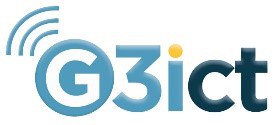Defining Accessible Smart Cities
Posted on October 10, 2016

Vice President, Global Strategy and Development, G3ict
James Thurston discusses survey findings and next steps of the joint G3ict, World ENABLED and Microsoft initiative on accessible technology in smart cities.
By 2025, there will be at least 88 smart cities in the world – up from 21 in 2013 [1]. The majority of these smart cities will be in Asia and the Americas. This global proliferation of smart cities has added an increased urgency to the dialogue on accessible technology, particularly for persons with disabilities and older persons. What do we mean by accessible smart city technology and how do we ensure that smart cities result in more not less digital inclusion? These were some of the questions that G3ict, World ENABLED and Microsoft recently posed through a survey to nearly 200 experts from various sectors around the world. An initial analysis of the survey data begins to reveal some interesting and important findings.
An overwhelming majority of the experts who participated in the survey (94%) felt that smart cities that leverage accessible Information and Communications Technology (ICT) would help all citizens be more included in their communities – be it civic engagement, e-governance, or just accessing services through digital platforms. These experts also overwhelmingly recognized that the benefits of accessible ICTs would extend beyond persons with disabilities to help all citizens of smart cities. Technologies like cloud computing, wearables, artificial intelligence, 3D gestures and motion recognition, etc. offer great potential for both persons with disabilities and older persons. And this leads to our global challenge.
While the majority of the experts who participated in our survey recognize the benefits of accessible smart cities technology, more than half (56%) do not know of any smart city initiative with an explicit focus on ICT accessibility. Less than 20% see a clear link between ICT accessibility standards and smart cities programs. Most experts feel that smart cities may in fact be failing persons with disabilities. As more and more activities and services move to digital platforms, inaccessible technology means basic rights and services would exclude millions of smart city citizens. Our survey shows that global leaders know what are the key barriers to digital inclusion, e.g. lack of awareness, lack of policies and regulations, and lack of training. However, they need tools to help them overcome these barriers while building smart cities. This is the gap that G3ict, World ENABLED and Microsoft are working now to fill.
Moving forward, G3ict and World ENABLED will use this survey data to inform global roundtable discussions we will be holding with Microsoft and other partners in Quito, Barcelona, London, and Singapore in the coming weeks. These international forums will help us build a set of tools to support governments, industry, civil society, and academia in focusing on accessibility in smart cities. The toolkit will include model policies, an inventory of ICT accessibility standards, examples of solutions, KPIs, best practices, and capacity building and outreach strategies.
Our objective for this initiative on accessible technologies in smart cities is to be a catalyst for global action towards broader digital inclusion. We are always working toward more accessibility, but also now toward Smart Accessibility.
[1] See IHS press release: Smart Cities to Rise Fourfold in Number from 2013 to 2025























